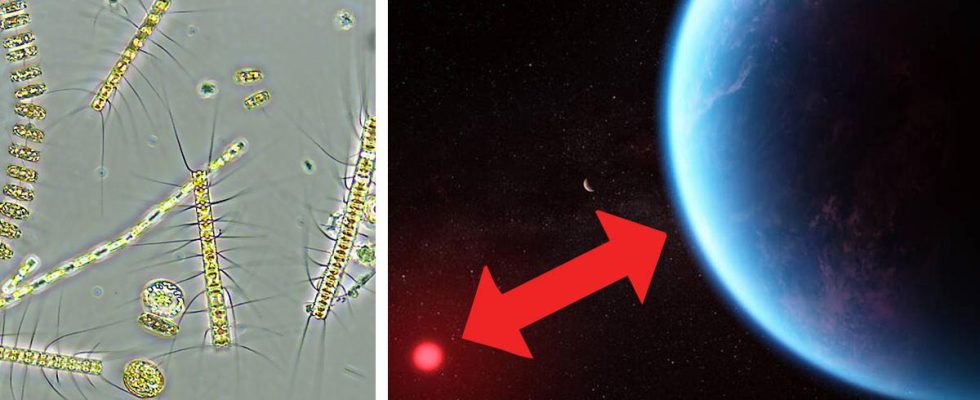It is at a habitable distance from its star and is called K2-18b.
Now Nasa has found new signs that there may be life on the planet.
A particular finding is singled out for further research.
K2-18b was discovered in 2015 and is an exoplanetexoplanetA planet that lies outside our own solar system. Also called extrasolar planet. at a distance of 120 light years from Earth. It is at a distance from its star – the red dwarf red dwarf Red dwarfs are the most common stars in the Milky Way. They are smaller and lighter than the sun. Because they burn their fuel slowly, they get very old. K2-18 – which the scientists call the “habitable zone”.
Already in 2019, space scientists, using the Hubble telescope, observed clear markers of water vapor in the planet’s atmosphere.
Refined analyzes have now been made with the new James Webb telescope. By studying a narrow streak of light from K2-18b, several signs of possible life were found.
“The abundance of methane and carbon dioxide, and the lack of ammonia, supports the thesis that there may be an ocean of water beneath the hydrogen-rich atmosphere,” Nasa wrote earlier this week when the findings were made public.
Smells like corn
James Webb also found indications that the sulfur compound dimethyl sulfide may be present in the planet’s atmosphere. The observation is not as clear as for carbon dioxide and methane, but is pointed out as particularly important for future research.
“On Earth, this molecule is only produced by life. Most of the dimethyl sulphide in the earth’s atmosphere is released by phytoplankton phytoplanktonAlso called phytoplankton. They use photosynthesis, float in the upper water layers and are often the base of the food chain in both salt and fresh water. in marine environments,” Nasa writes.
Dimethyl sulfide is abbreviated DMS and is a highly volatile liquid with a characteristic odor reminiscent of heated corn.
– Upcoming observations by Webb should be able to confirm whether there is indeed DMS at significant levels in the atmosphere around K2-18b, says Nikku Madhusudhan, an astronomer at the University of Cambridge and lead researcher behind the new study.
Called “hycean world”
The planet is almost nine times as heavy as Earth and has just under three times the radius, writes The Guardian. It is believed to constitute what the researchers call a “hycean worldhycean world” From the English “hydrogen” and “ocean”. The planets where these worlds could hypothetically exist are larger and hotter than Earth.”.
– Our findings underline the importance of considering several different environments as habitable in the search for life elsewhere. Traditionally, the focus has been on smaller and rocky planets, but larger hycean worlds are much more suitable for atmospheric observations, Nikku Madhusudhan said in the NASA statement.
Hycean worlds only exist in theory. The existence of water offers the potential for the life forms we know on Earth, but scientists are not sure that they can actually make life possible.
CNN draws attention to a recent report where astronomers point to the risk of a violent greenhouse effect and, according to Nasa, the oceans may be so warm that they evaporate.
